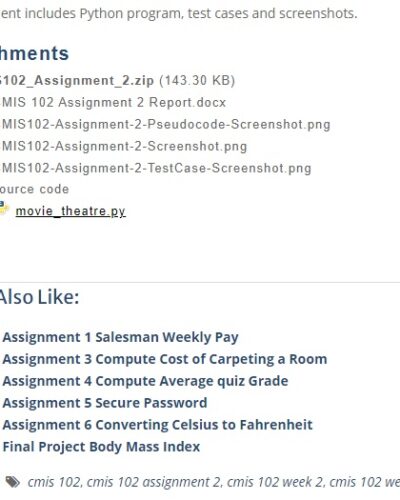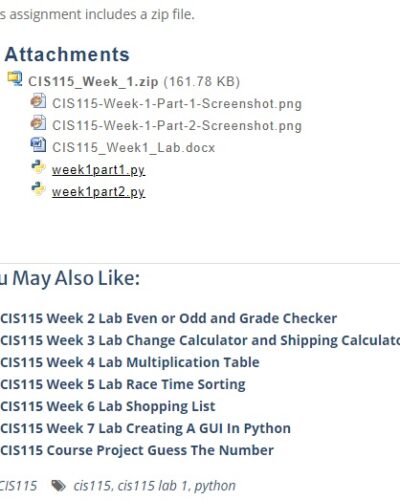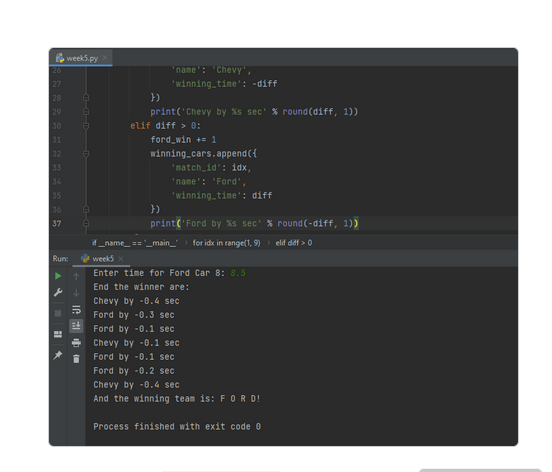
Implement Insertion Sort, an improved Merge Sort, and an improved Quick Sort
$34.00
Description
Program and Functions
Create a function repository called sorts.[x] where [x] is the appropriate file extension for your language choice. If you decide to use a language other than Java, Python, C++, or C, you must schedule a time to show me your running code.
If needed, your functions may include the size of your array, and you may name your variables as you like. Many of the functions we reviewed in class indexed arrays from 1 to n, so make sure you double check all of your indices! Each of the three sorting functions should alter the array sent.
insertionSort(array S) – In-place insertion sorts the array from index low to index high (inclusive). You will also need a helper method version of this sort that accepts indices.
merge(array S, array T) – Merges the two sorted arrays so the result is sorted. Returns the result.
mergeSort(array S) – Merge sorts the array, but switches to insertion sort when the array is smaller than 16 items. Although the sort is not in-place, the correct sort is copied back into the original array.
partition(array S, low, high) – Partitions the items in the array from index low to index high (inclusive) around the pivot, which is the median value from the three items at index low, high, and in-between. Returns the location of the pivot.
Note: The version of partition given in the book is a variation of the Lomuto partition scheme. Although it looks shorter and simpler than the one given in class (a variation of the Hoare partition scheme), it performs more slowly because it requires more exchanges. You may choose which scheme you use (just make sure you choose the median each time – if you don’t you will likely run out of stack space for quicksort when you have more than 1000 items in your array), and make sure you mention your choice in the write-up.
quickSort(array S) – “In-place” quick sorts the array, but switches to insertion sort when the portion of the array that is being sorted is smaller than 16 items. Note that this method does not require indices, so you will need a helper method.
All functions above should be public, and any extra functions you use should be private (indicate by underscores if you code in Python).
Testing
Write a tester file that tests each of the sorts with a variety of array sizes that have a variety of presortedness: completely random, mostly sorted, and already sorted.
How small should you test?
How large should you test? How would you create a mostly sorted array and how would you decide that it’s mostly sorted?
Create several copies of the same array at each size and presortedness, and time each of your sorting functions. And of course, before you do the above testing, make sure you also test for correctness. Example array for testing correctness:
[1, 2, 3,7, 9, 4, 5, 12, 13, 14, 23, 27, 24, 25, -1, -2, -3, 3, 3, 3, ]
Write up
Your submission should include a write-up for your project, in LATEX containing the following sections:
Introduction – A description of your project.
Methodology – A description of each of your sorting functions that would be understandable by someone who does not know about these sorts, a description of improvements made over the original sort, and a description of your use of helper methods.
Results – How you chose your test sizes and what determined “mostly” sorted, tables/graphs containing your results, an overall description of your results, and some general analysis of why you got those results.
SCREENSHOTS
SOLUTION
PAYMENT
The solution includes a zip file.
Attachments [Move over files to preview content of those files]
Implement_Sort_Algorithms.zip (82.61 KB)
Implement-Sort-Algorithms-Screenshot.png
sorts.py
Preview sorts.py
xxxxxxxx = x
xxxxx xxxxxxxx > 0 xxx xxxxx[xxxxxxxx – 1] > xxxxxxx_xxxxx:
xxxxx[xxxxxxxx] = xxxxx[xxxxxxxx – 1]
xxxxxxxx = xxxxxxxx – 1
xxxxx[xxxxxxxx] = xxxxxxx_xxxxx
return array
def merge(array_S, array_T):
”’
Merges the two sorted arrays so the result is sorted. Returns the result.
”’
m = len(array_S)
n = len(array_T)
i = 0
j = 0
array = []
while i < m or j < n:
xx x >= x:
xxxxx.xxxxxx(xxxxx_x[x])
x += 1
xxxx x >= x:
xxxxx.xxxxxx(xxxxx_x[x])
x += 1
Price: $40
Buy Now
Checkout
Added to cart
Add to Cart
Checkout
Added to cart
You May Also Like:
Python Assignments Credit Plan and Series Numbers
Python Assignments Triangle and Guessing Number
Caesar Cipher implementation in Python
The Sieve of Eratosthenes Implementation in Python
Only logged in customers who have purchased this product may leave a review.




Reviews
There are no reviews yet.